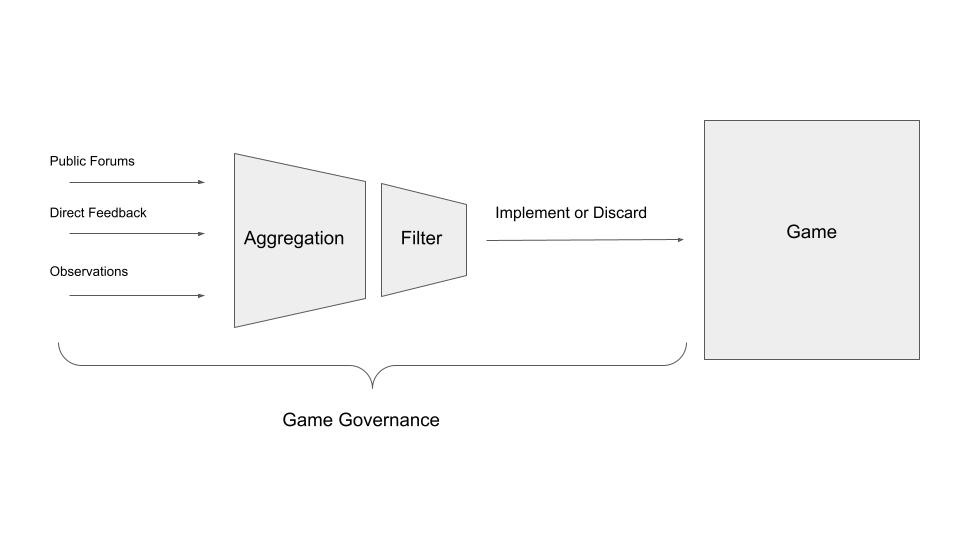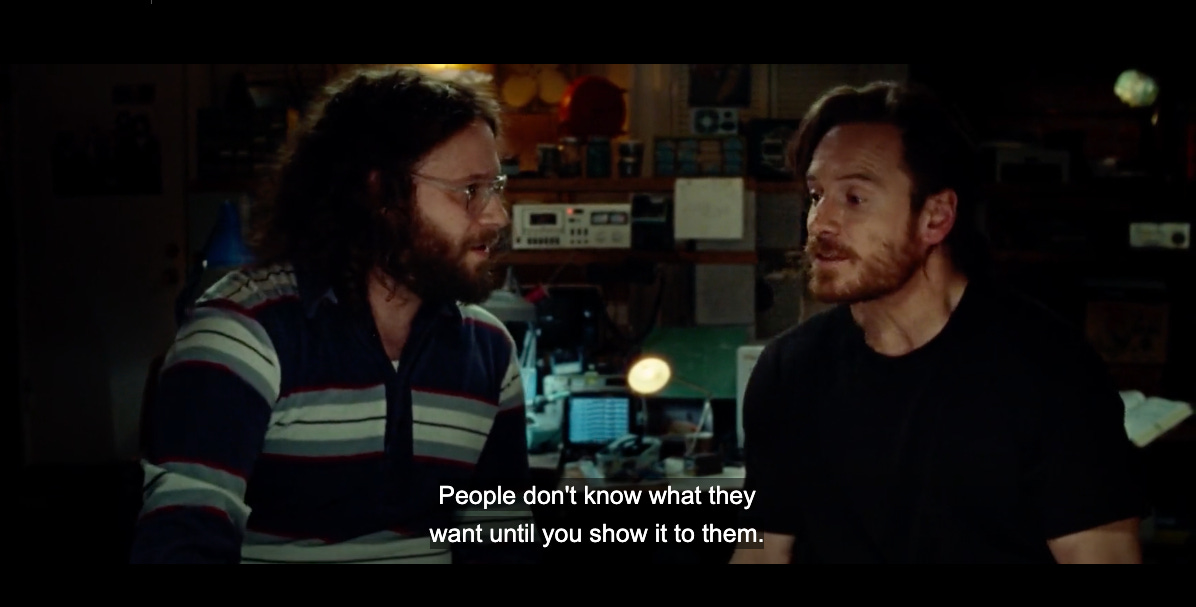Game Governance - A Primer
What is it, Why its Important for Web3 Games, Pros/Cons and Some Quotes
This is a short primer on a six-part series on different models of governance used in games based on a talk I gave at the Alliance Summit linked here. Before I talk about the models I want to first talk about:
What game governance is and is not
The necessity of some type of process in web3 games (Why I bothered to write about governance)
Pros/Cons of having such processes.
What is Game Governance
Game governance is the process by which stakeholders of a game participate in its evolution.
It can be as indirect as providing organic feedback through public forums which are then iterated upon by the developing studio or as direct as voting on content proposals that arise through community discussion. Note that both are already practiced today.
It can be as granular as voting on individual content updates, or as abstracted away from the content itself as having control over parameters in the ecosystem - think bps trading fee on a native DEX, p2e emissions..etc.
The structure by which this process takes place is what is different across multiple games. Within the aggregation funnel games can
Source organically through public forum crawling, replies to AMAs…etc
Create a council that represents player interests that will do the aggregation for you
Require players to create proposals.
Within filtering games respectively have a choice of
Internal - all filtering happens within the studio without player input
Weighing - additional weight is given to proposals depending on the source
Voting - all proposals that pass vote must be implemented.
Game governance is certainly not the same or as radical as game dev by committee, and simply refers to a process. Whether this process is codified/structured is a degree of freedom up to the community or developers of the game.
Game Governance in Web3
Retention
Game governance increases retention. As game monetization lifespans increased with GaaS, it became important for games to continue to deliver experiences that satisfied consumer demands. This consequently led to an increase in methods and manpower dedicated to collecting and aggregating player feedback. As we’ll see later, many game governance mechanisms arose as a reaction to players leaving the game after an update that they didn’t like.
For web3 games that want to monetize by controlling key infrastructure (a marketplace, an AMM), key metrics that affect revenue are velocity and investment over time. Hence, retention is just as important.
Trust

Also important is increasing investment by making players feel safe and creating trust with the community. In this manner, game governance mechanisms contribute two things in web3 games.
They make bag holders feel safer.
“Property rights will eventually lead to democracy. Because you can’t sustain a market oriented system property system unless you provide a democratic system. That’s the only way investors can feel secure” - Hernando de Soto.
This is of course, not necessarily a good thing. Incumbents always have an incentive to short term pump their bags, which can be long term detrimental to the health of the game. Game governance system designers have to think extremely carefully about the timing of decentralization, who gets to vote, what is voted on and implement other financial policies that align long-term growth of the game with its investor-class player base.

For some gud reads - Lars Doucet’s essay on land value tax, and on countering land speculation.
Create trust with the community
A well-designed governance mechanism also ensures players that their voices are heard. Many a great game has died with an update unsanctioned by the community.
Pros and Cons
Pros:
Increase investment and community trust - see above
Governance as content
Politicking, campaigning, and coordinating players have no mastery and provides an endless stream of available activities.
Edward Castronova wrote in “Virtual Economies: Design and Analysis” that economics and market design was additional content for the player to enjoy. I’ve personally witnessed and have been the type to enjoy market making, trading, and investing in MMOs over playing the actual game.
I think the end game for game governance is to integrate it into content. Organizing other players - especially in protests/game development suggestions - has after all been one of the longest constants in large multiplayers. In some sense, game governance perfectly marries the two. I’ll talk about more governance as content in part 6.
A gud watch: Governance in F2P Games, GDC 2014 and a gud read: GameFi Player Retention by @LeftsideEmiri.
Align with the decentralized ethos of web3
Ease off the content treadmill for developers
Cons:
Additional design complexity
All this might lead to games that revert to the mean and take much less risk. Arguably this is already happening.
Some Quotes as an Ending Thought
“The upside of some of the older games where they might have a little bit more of a distinct flavor [is that] they weren't sort of focus group to death in the way that some of the more modern games can be.” - John Carmack
“People were wrong because they considered only variables that were public knowledge—which were only a fraction of the pertinent factors. Game development is incredibly complicated, and fans see only a few pieces of the puzzle. Games are often headless monsters; moved in different directions by technological, design, or financial limitations, instead of by anyone in the studio.” - John Staat
Hoping to finish the series within the month. Follow me at 0xtaetaehoho on Twitter if you enjoy my content.






